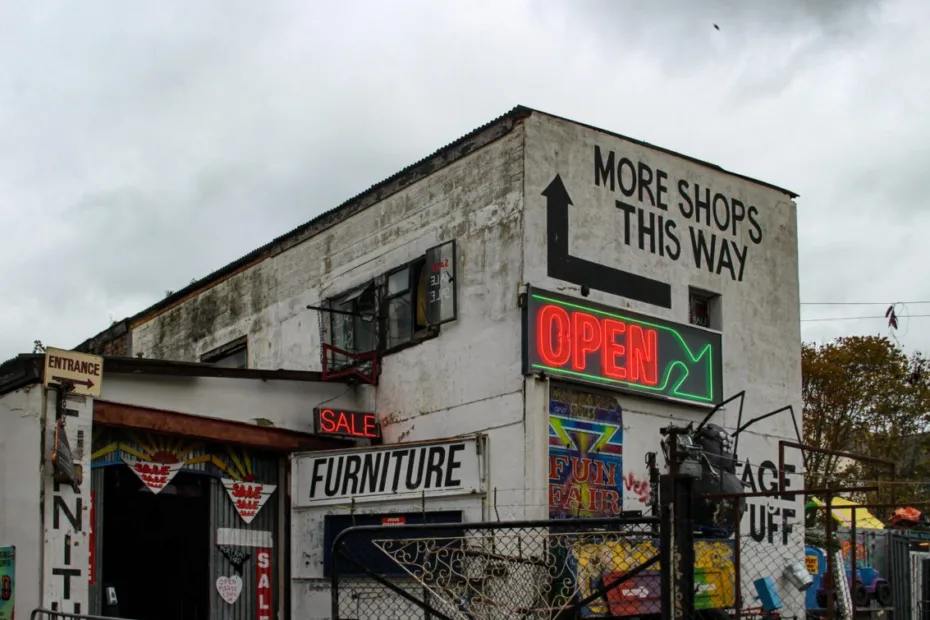Major urban centres are the sorts of places we would expect to find creative businesses clustered together. Yet go beyond London’s Shoreditch, Manchester’s Northern Quarter, or Edinburgh’s Cowgate, and you can find microclusters of creative firms in places that we wouldn’t necessarily expect them to be.
This new report, by PEC researchers from the Science Policy Research Unit at the University of Sussex, uses survey data and novel website scraping techniques to identify where the UK’s creative businesses are located, to what extent they are grouped together in ‘microclusters’, and the benefits to clustering.
To create a map of the UK’s creative industries, researchers scraped data from the websites of 200,000 creative businesses, allowing them to pinpoint where organisations were based. This helped them to identify ‘clusters’ of creative firms within walking distance of each other. The concept of ‘creative clusters’ or ‘clustering’ refers to groups of businesses in a particular industry benefiting from being near to each other, for instance the potteries of Stoke-on-Trent.
Creative Radar builds on previous research by Nesta that identified large established creative clusters based in cities like London, Oxford, Bristol, Newcastle, Edinburgh and Sheffield. Taking this research a step further, this report identifies 709 creative microclusters around the UK. Intriguingly, a third of these microclusters are located outside of the established large creative clusters. They can be found in places like Carmethen in Wales and Louth in Lincolnshire, illustrating the diversity and dispersal of the UK’s creative industries.
To understand why creative business cluster in this way, Creative Radar analysed the responses from a survey of 976 firms carried out in March 2020, just before the national COVID-19 lockdown. It found that there are benefits for being part of a creative cluster, which differ depending on the sort of cluster a business is part of, and where in the UK it is based.
Businesses that are part of microcluster within a large established creative cluster, such as North Laine in Brighton, rely on their proximity to other creative firms, sharing knowledge and resources, and having access to a concentration of customers. They benefit from being within a cluster, yet, these firms did not translate these benefits into faster growth.
The picture is different for organisations in microclusters, such as Telford in Shropshire or Lerwick in Shetland, that are outside of the large established clusters. These firms were more likely to have grown, and reported more benefits from being inside a microcluster. At the same time, they were not confident about their ability to attract funding, which they consider to be their biggest obstacle to growth. This was particularly the case for businesses outside of London and the South East.
Creative Radar presents clear recommendations for policymakers who are serious about levelling up the UK.
More should be invested in encouraging microclusters to emerge outside of the established large clusters. Innovative, creative organisations can be found in unexpected places, and benefit considerably from being part of a microcluster.
Investment in programmes like the Creative Scale Up would support them to grow further, and give them the confidence and knowledge to access investment and funding.
See the full size version of the map here and read more in the blog from Josh Siepel.

Published 19th November 2020
Please reference this paper as:
Siepel, J., Camerani, R., Masucci, M., Velez Ospina, J., Casadei, P. and Bloom, M. (2020) Creative Radar: Mapping the UK’s creative clusters and microclusters. Multiple: Creative Industries Policy and Evidence Centre and The University of Sussex. Available from: https://pec.ac.uk/assets/publications/PEC-Creative-Radar-report-November-2020.pdf
Photo by Photo by Alyssa Bossom, taken of Margate in England.
This research report is published by the Creative Industries Policy and Evidence Centre (PEC). All PEC research reports have been peer reviewed prior to publication. In keeping with normal academic practice, responsibility for the views expressed in this research, and the interpretation of any evidence presented, lies with the authors. These views and interpretations do not necessarily represent those of the PEC or its partner organisations.
Related Research Reports
The impact of overseas mergers and acquisitions on UK video games industry
A new scoping study on the economic consequences and potential market failures The BFI’s Resear…
Post-Brexit migration and accessing foreign talent in the Creative Industries
The UK’s departure from the EU has changed the way that British firms trade and work with Euro…
12 facts about the UK’s international trade in creative goods and services
Worldwide exports of creative goods exceeded 500 billion USD in 2015, with a 150% increase since 200…
The migrant and skills needs of creative businesses in the UK
This report details the results of a survey of employers commissioned by the Creative Industries Cou…




